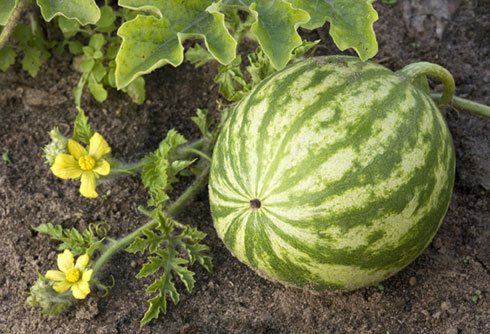
In this new green tip from Lucinda Dyer, author of Eco-Horsekeeping: Over 100 Budget-Friendly Ways You and Your Horse Can Save the Planet, we find out the affordable way to grow your own organic produce. Even better—you can weed, water, and fertilize in between riding lessons and grooming sessions.
There is now a literal truck load of books on the market about how to create a mini-garden, but these are two of my favorites: All New Square Foot Gardening: Grow More in Less Space by the elder statesman of small space gardening, Mel Bartholomew; and The Bountiful Container by Rose Marie Nichols McGee and Maggie Stuckey.
The best melons I’ve ever eaten were grown in my friend Michelle’s compost piles. Okay, so she is English and we know they can garden anywhere, but as melons are fertilizer and water hogs, a compost pile is the ideal place to grow everything from cantaloupes to watermelon. Here’s how:
- Select a spot that gets lots of sun and not a lot of wind—melons don’t like being chilly.
- Create 2 to 3 foot “mounds” of approximately 50 percent soil and 50 percent aged compost (it must be ripe aged compost or the melons will feel like they’re in a deep fryer) and site the mounds 4 to 6 feet apart.
- Plant your melon seeds 1 inch deep. Thin the seedlings so you have two plants per mound.
- Give each mound 1 to 2 inches of water a week, especially while the fruit is maturing.
- Since planting times and variety of melon you can grow will vary from region to region, consult your local Extension Office or garden center if you have any questions.
To make your barnside gardening even greener, recycle used muck buckets (just remember to put holes in the bottom for drainage) and use them as containers, and instead of dumping your water buckets in the driveway, use that water on your veggies and melons.
Get more green ideas, as well as detailed information on how to start and maintain compost in Lucinda Dyer’s book Eco-Horsekeeping.
Click here for more tips on green horsekeeping.







Good idea!
that’s cool!
I like flowers too.
My grandfather is a likes to grow a couple crops each year. Now that I have moved my horses to his house he will have free fertilizer once it ages.
we grow flowers around our house and one of our horses likes to eat them. I think it is a good idea.
I think it is a good idea. flowers are very pretty. my horse likes to eat them though.
Good idea!
very smart!